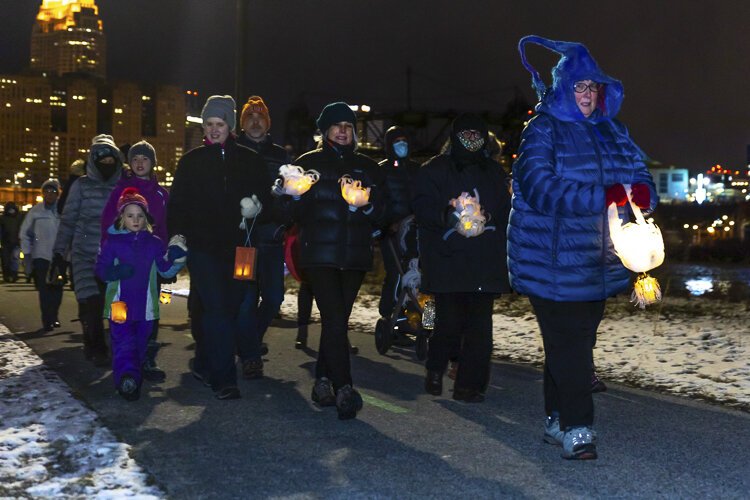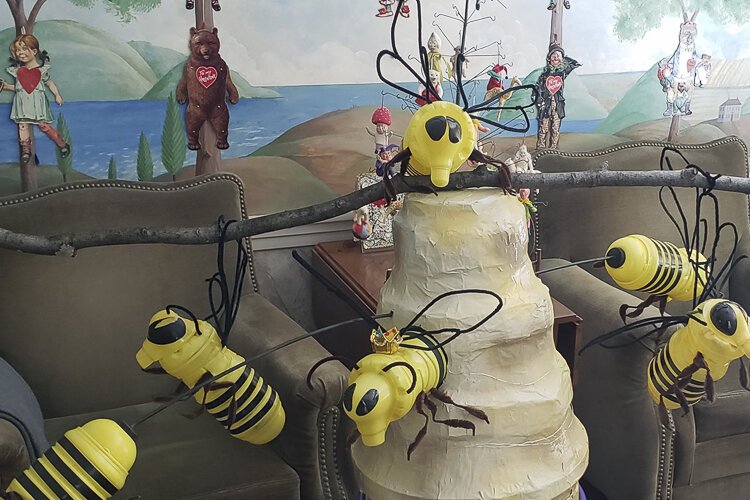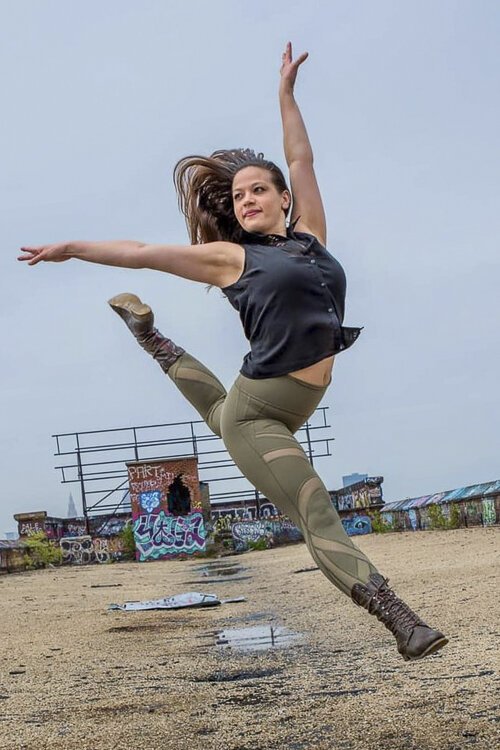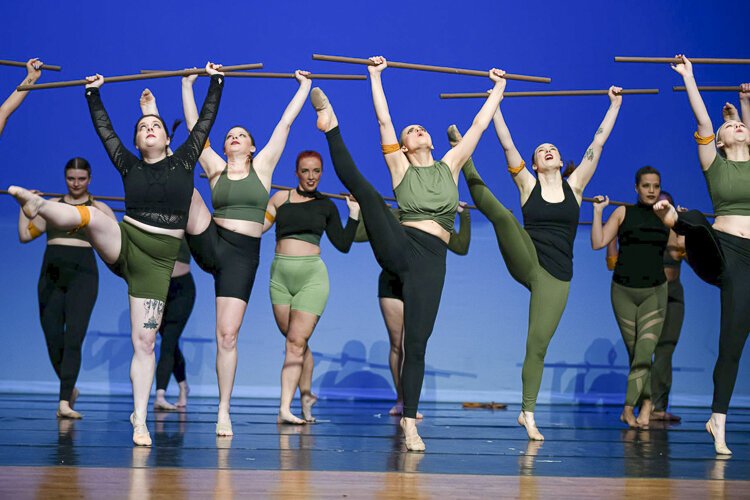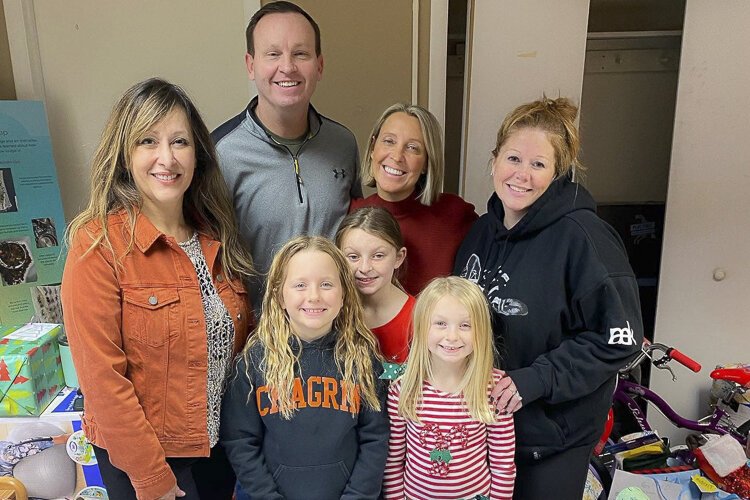Newcomers: 27 groups are first-time recipients of Cuyahoga Arts & Culture project support grants
The 27 organizations receiving CAC Project Support Grants for the first time
Cuyahoga Arts & Culture awarded $1,350,592 for 193 Project Support grants for 2023, with 27 organizations earning the grants for the first time. Here is the complete list of first-time project support grant recipients:
- Barton Center, Inc.
- The Association of African American Cultural Garden
- Diversity Center of Northeast Ohio
- Providence House
- Cleveland Dance Project Company
- The Land
- Men of Independence
- Oh Sew Powerful, Inc.
- Fostering Hope Ohio
- Upcycle Parts Shop
- Artful
- Pakistani Cultural Garden
- Kaboom Collective
- North East Ohio Musical Heritage Association
- Ukrainian Cultural Arts Association of Greater Cleveland
- Poise Entertainment Education Inc
- Cleveland Wind Symphony
- Cleveland Silent Film Festival and Colloquium
- Coventry PEACE Campus
- Group Plan Commission
- Canalway Partners
- One South Euclid
- BigHearted Blooms
- The Makers Alliance
- Northwest Neighborhoods CDC
- Writers in Residence
- Cleveland Repertory Orchestra
The many Northeast Ohio organizations that have benefitted from Cuyahoga Arts & Culture (CAC) grants over the past 13 years not only know the importance of their work in enriching the region, they also know that without funding it’s often tough to survive.
In November, CAC announced it will invest $11,755,225 in 273 Cuyahoga County nonprofit organizations in 2023 through its General Operating Support, Project Support, and Cultural Heritage grant programs.
 Towpath Trail Lantern ParadeSince 2006, CAC has invested $230 million in 472 organizations through these grant programs
Towpath Trail Lantern ParadeSince 2006, CAC has invested $230 million in 472 organizations through these grant programs
.
“We continue to be impressed with the arts and culture nonprofits that are managing complex situations—making tough decisions, and yet still launching more programs to serve residents,” says CAC executive director Jill M. Paulsen. “COVID-19, inflation, and staffing shortages have not spared our arts nonprofits, and we are proud to support them as they push ahead to produce inspiring programs that serve our community.”
At its Nov. 9 meeting, the CAC board of trustees approved $10,184,930 in unrestricted, multi-year general operating support grants—ranging from $14,198 to $1.164 million—to 68 Cuyahoga County organizations to give core support in providing arts or cultural services to the public.
Additionally, the board approved $1,350,592 for 193 project support grants—ranging from $1,056 to $18,730—that will support a variety of specific programs and events. Project Support grants promote and encourage the breadth of arts and cultural programming in our community by supporting projects both large and small throughout Cuyahoga County.
Then, at its Dec. 14 board meeting, the CAC board approved six additional grants, including $400,000 in four Support for Artists (SFA) grants and two resident-led grants.
A dozen nonprofits received $219,703 in cultural heritage grants—ranging from $5,000 to $30,000—to fund organizations with a primary mission of presenting arts and culture programs to a culturally specific population.
Paulsen notes that through careful planning, CAC has kept its funding levels steady for the past four years.
“Public funding is vital for arts organizations, especially as the impact of the pandemic continues to play out,” she says. “We are grateful that this community supports and benefits from its local nonprofits.”
Of the project support grants, 27 organizations are first-time recipients. Here’s a look of five first-time project support grant recipients and the work they do.
 Artist Robin VanLear at the Coventry PEACE CampusARTFUL’s Art is for the Birds
Artist Robin VanLear at the Coventry PEACE CampusARTFUL’s Art is for the Birds
Artist Robin VanLear is renowned for the contributions she’s made to the Cleveland arts scene over the past three decades—most notably launching the Parade the Circle celebration in 1990, which draws several thousand participants and spectators to University Circle each June; and conceiving the Cleveland Museum of Art’s annual Chalk Festival. VanLear also produced the gala parade that opened the Rock & Roll Hall of Fame in 1995.
Two years ago, VanLear began a new chapter in her artistic life. She joined the board of directors of ARTFUL, which was established in 2017 on the Coventry P.E.A.C.E. Campus in Cleveland Heights. Dedicated to providing affordable studio spaces on the campus where artists can create, sell, and display their work, ARTFUL has also set additional rooms aside for workshops and critique sessions.
“So many local artists didn’t have the space they needed or couldn’t find a small studio that would be all their own,” says VanLear. “ARTFUL is working to solve that concern.”
In fact, VanLear opened her own Art Acts studio on the campus, where she continues to create sculptures, installations and performance art presentations.
“The P.E.A.C.E. campus is also a place where artists can exchange ideas and collaborate,” she explains. “We’re working together to make art accessible to everyone.”
In October, VanLear crafted giant puppets for P.E.A.C.E. Pops, a quarterly arts event that features open studios and live music. Earlier this month, her fellow ARTFUL artists led workshops in which participants created the lights they carried during the second-annual P.E.A.C.E. Lantern Parade in the Coventry Road business district.
 Artful Cleveland artist, LaSaundra Robinson works on painting in her studioA $4,000 CAC project support grant awarded to ARTFUL will help VanLear’s next project, “Art is for the Birds,” take flight.
Artful Cleveland artist, LaSaundra Robinson works on painting in her studioA $4,000 CAC project support grant awarded to ARTFUL will help VanLear’s next project, “Art is for the Birds,” take flight.
She’s coordinating the initiative, which begins in February and culminates in July with theatrical performances at Coventry P.E.A.C.E. Park that will be inspired by Aristophanes’ classic satire-fantasy “The Birds.”
To prepare for the production, VanLear will orchestrate workshops throughout spring and early summer. The workshops will be led by professional artists of all races, generations, and genders who will help participants hone their talents for creating sets, costumes, and props made from recycled materials.
“‘Art is for the Birds’ is still a work in progress,” VanLear says. “But the issue of climate change is important to me, so I know there’ll be little messages about the need for protecting our planet. We’ll be working with the Cleveland Heights Green Team to gather recycle materials and include dialogue about ways to be mindful about the carbon footprint we leave.”
A spring-break camp for high school students is also being planned, and VanLear says she hopes to offer paid internships to those taking a special interest in the project and it will take off into something big.
“Parade the Circle started small, and this will start small,” the artist reflects. “But I’m really hoping it’s a seed that people will get excited about and want to grow over the years.”
 Towpath Trail Lantern ParadeCanalway’s Towpath Trail Lantern Parade
Towpath Trail Lantern ParadeCanalway’s Towpath Trail Lantern Parade
Each year, more than 2.5 million outdoor enthusiasts from around the country make a pilgrimage to Northeast Ohio’s portion of the Ohio & Erie Canal Towpath Trail. Some come to birdwatch, bike, or hike. Others opt to simply stroll as they admire the scenery surrounding the 101-mile route where mules once pulled boats filled with passengers and goods up and down the waterway that connects Lake Erie to the Ohio River.
Mera Cardenas has made it her mission to spread the word about the iconic pathway’s place in history. As executive director of the 37-year-old nonprofit cultural heritage organization Canalway (formerly Canalway Partners), she’s devoted to developing a slate of special events and programs designed to entertain and enlighten even the staunchest couch potatoes about the wonders of the Ohio & Erie Canalway National Heritage Area in Cuyahoga County.
“We all know firsthand or have heard that the trail is a tremendous recreational resource for hikers, runners and dog walkers,” Cardenas says. “But the question is: How do you connect this incredible area to people who might not think of themselves as trail people?”
In March, Cardenas, along with her staff and board, did just that with the debut of the Towpath Trail Lantern Parade, a celebration of light, creativity, and sustainability that welcomed spring to the banks of the Cuyahoga River.
More than 150 participants braved bitter windchills to gather at dusk at Sokolowski’s Overlook on West 13th Street and walked the 1.6-mile round-trip route to the historic firehouse in Scranton Flats and back.
 Canalway Executive Director, Mera CardenasAlong the way, they admired the sweeping views of the downtown Cleveland skyline while carrying homemade lanterns crafted from recycled materials, like plastic soda bottles, cardboard mac-and-cheese boxes, and peanut butter jars, filled with battery-operated lights. Local artists lined the way with their lighted installations centering on the theme of sustainability.
Canalway Executive Director, Mera CardenasAlong the way, they admired the sweeping views of the downtown Cleveland skyline while carrying homemade lanterns crafted from recycled materials, like plastic soda bottles, cardboard mac-and-cheese boxes, and peanut butter jars, filled with battery-operated lights. Local artists lined the way with their lighted installations centering on the theme of sustainability.
A $4,000 CAC project support grant will help make the parade a reality again on March 11. Cardenas says this winter she plans to add a series of lantern-making workshops for all skill levels conducted by area artists.
“We spend so much time indoors at this time of year,” Cardenas reflects. “But winter is not a bad season. It’s just another season with it’s own beauty that should be enjoyed, too. The Lantern Parade on the Towpath Trail gives us a chance to do that by honoring the area’s history and taking pride in how far we’ve come in making sure the Cuyahoga River remains clean and our commitment to the environment remains strong.”
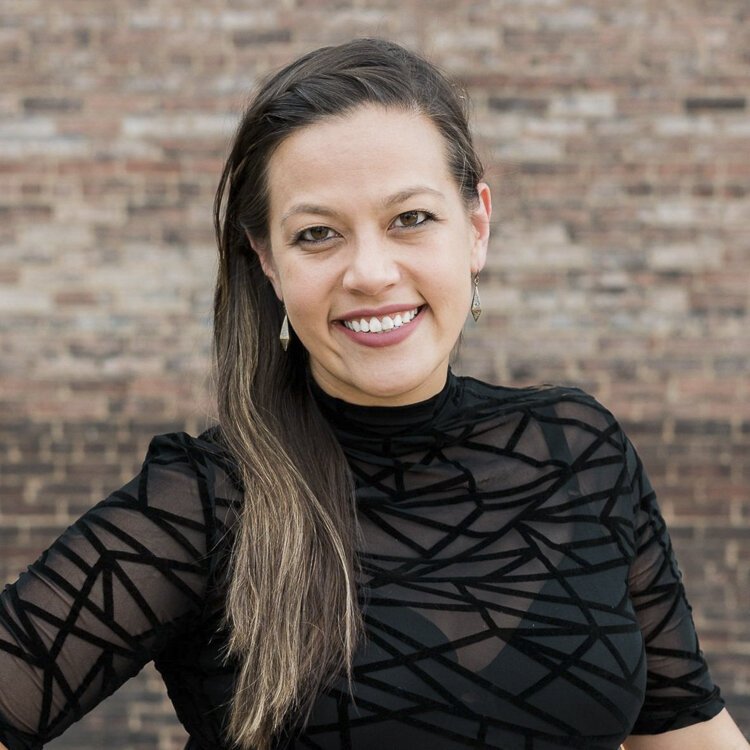 Anna Cerveny, founder and executive director of Cleveland Dance Project CompanyCleveland Dance Project Company’s community wellness project
Anna Cerveny, founder and executive director of Cleveland Dance Project CompanyCleveland Dance Project Company’s community wellness project
Anna Cerveny, founder and executive director of Cleveland Dance Project Company, is clearly in love with the joy of movement dance can bring.
Her ardor for the artform began from the moment she started taking classes at age three and has continued throughout life’s ups and downs. After earning her B.S. in chemistry from Carnegie-Mellon University and Doctor of Physical Therapy from Columbia University, Cerveny spent a year traveling the globe as the physical therapist for the Tony-winning musical “War Horse,” before returning home to Ohio.
“Not only is dance a great way to keep moving, it’s a wonderful way to develop a sense of community with the people around you who are engaged in the same activity,” she says. “It’s also a way to leave the cares of the world behind and throw yourself into a world that’s totally different.”
Today a clinical specialist at University Hospitals, Cerveny knew the time had come to share her passion with others. In 2019, she founded Cleveland Dance Project Company, a nonprofit that designs a variety of wellness programs utilizing dance and movement in ways that lead to physical health and well-being.
Early this year, her troupe of nine professional dancers and two apprentices debuted their Community Wellness Project initiative. One component, a Dancer Wellness Workshop, focuses on health and longevity for dancers. The next one is scheduled for Feb. 5 at The Pivot Center for Art, Dance and Expression.
Over the summer, the Community Wellness Project’s outreach blossomed into free quarterly classes for non-dancers. Centering on mindfulness and movement, they’re designed to help those in the room express emotions when there are no words for what they’re going through.
The ensemble makes regular visits to The Gathering Place, a community that supports families and individuals coping with cancer; Laura’s Home Women’s Crisis Center; and Friendly Inn, an organization that provides social services to Cleveland residents.
Each session includes playing generational music on Spotify, and plenty of time for journaling.
“Putting our thoughts down on paper is a way to check in with ourselves,” Cerveny says. “When we share what we’ve written, we often discover we’ve not alone in what we’re going through.”
Programs at The Gathering Place incorporate mindful techniques to manage and allay pain. “Everything we do is totally nonjudgmental,” Cerveny says. “One woman wrote the word ‘tired’ on a scrap of paper, and we spelled out the word together with our bodies.”
 Although Cerveny’s emphasis at crisis centers and shelters is distinctly different, the goal remains the same: To promote mental and physical health through enjoyable movement.
Although Cerveny’s emphasis at crisis centers and shelters is distinctly different, the goal remains the same: To promote mental and physical health through enjoyable movement.
“The participants are dealing with very different stressors than The Gathering Place population,” she says. “Our programming is a two-pronged approach. We conduct a dance class for children in one room and, in another, give women in attendance a reprieve from motherhood by offering them a chance to journal, share feelings and dance to their favorite music. We’ve had a couple of moms who’ve said they just wanted to watch, but by the end of the session, they’re up there movin’ and groovin’ with the rest of us.”
A $5,000 CAC project support grant will enable the Cleveland Dance Company Project to expand and strengthen its outreach opportunities.
“It’s a real joy and a real blessing to incorporate two of the things I love—dance and physical therapy—and have them be the tools to help people with their health and wellbeing,” Cerveny says.
 Karen Carter, executive director of Fostering Hope OhioKaren Carter, executive director of Fostering Hope OhioFostering Hope Ohio’s arts program
Karen Carter, executive director of Fostering Hope OhioKaren Carter, executive director of Fostering Hope OhioFostering Hope Ohio’s arts program
The children that Karen Carter, executive director of Fostering Hope Ohio nurtures have lived lives that are as far removed from a Hallmark movie script as it is possible to be.
Established in 2013, the nonprofit organization is dedicated to raising awareness of the challenges faced by kids in the foster care system and provide opportunities for them while positively engaging in the community they reside in.
“The children we work with have been through severe trauma caused by horrific stories like the kind you hear about on the news, including being removed from where they live because they’ve been very severely neglected or abused,” Carter says. “Due to the intense trauma they’ve experienced, some have developmental delays or suffer from Fetal Alcohol Syndrome, which have resulted in emotional and behavioral challenges.
While the organization has many supportive foster homes and families who open their hearts to kids, sometimes the arrangement just doesn’t work out. “Maybe there isn’t a good fit with the other children in the home or they struggle with behaviors they’ve learned in order to survive that are not healthy in a loving home,” Carter continues. “Not all families are ready and equipped to help in those situations.”
Carter and her staff, along with a team of more than 600 volunteers, partner with residential centers and foster care agencies to enrich the lives of 1,500 young people in Cuyahoga County who range in age from infants to 25.
Some have never experienced the joy of celebrating their birthdays and Fostering Hope Ohio makes sure it’s a fete to remember through its Childhood Experiences program.
Residential center staff members submit a specific list of three items each child would like to receive. Through the generosity of donors, the nonprofit makes it happen.
“We just don’t look through a bin full of toys and say, ‘Okay, what would an eight-year-old girl want,’” Carter explains. “Instead, we want to make their wishes come true by asking what they’d like, wrap the gifts, and deliver them before their birthday.”
Carter says she’s amazed at what some of the requested presents have been through the years. One teen with dreams of caring for animals in Africa asked for a Swahili dictionary, and shared ways she was learning the language. Another recipient received a violin along with lessons, courtesy of a Fostering Hope Ohio patron.
 Fostering Hope Ohio's Childhood Experiences programSince children in foster care or transitional housing often move multiple times, they’re used to keeping everything they own in plastic bags. To make the road a bit easier, the nonprofit provides children with a Journey Bag—a new suitcase or large duffel bag stocked with toiletries, a blanket, pillow, water bottle and teddy bear they get to keep.
Fostering Hope Ohio's Childhood Experiences programSince children in foster care or transitional housing often move multiple times, they’re used to keeping everything they own in plastic bags. To make the road a bit easier, the nonprofit provides children with a Journey Bag—a new suitcase or large duffel bag stocked with toiletries, a blanket, pillow, water bottle and teddy bear they get to keep.
“When you’re in a new home with new parent figures, asking for things like deodorant can be intimidating,” Carter says. “The Journey Bags are one more thing that gives them dignity and comfort in a new space. Some of the children being placed are infants coming directly from the hospital, so the foster families appreciate the necessities that will get them started.”
The self-esteem and self-confidence foster children often have in short supply are enriched in therapeutic ways through a variety of health and wellness and community involvement programs. They include Hope in Balance art and yoga classes led by trauma-trained teachers and overnight summer Wonder Camps filled with outdoor adventures.
Hope Grows Here gardens planted at Bellefaire JCB, Applewood Centers, and Beech Brook follow a STEAM-based (science, technology, engineering, arts and mathematics) curriculum focusing on horticulture and the science behind it.
“We grow a variety of vegetables and herbs,” Carter says. “The children and youth cook with them, sell them at market gardens to raise money for charity or take the [produce] home with them.”
A $5,000 CAC project grant will support Fostering Hope Ohio’s arts programming that’s designed to inspire and challenge participants to rediscover self-worth as they expand their artistic skills.
“The funds [will help ensure] young people in foster care and residential treatment can continue to find healing through artistic expression and engagement in the wider arts and culture community in Cuyahoga County,” Carter says.
“They’ll also discover,” she adds, “that not everyone will hurt them.”
 Zachary Thomas, executive director of Writers in ResidenceWriters in Residence’s mentoring program
Zachary Thomas, executive director of Writers in ResidenceWriters in Residence’s mentoring program
Zachary Thomas doesn’t remember a time when he didn’t believe in the power of the written word.
“Writing has always been such a fundamental therapeutic resource for me,” he says. “At the same time, there’s something really unique about literature that reminds us of our human dignity—and we all need a reminder of that from time to time.”
Thomas recalled that conviction in 2017, while a junior at John Carroll University (JCU). Members of the Carroll Ballers—classmates who volunteer their time to mentor and play basketball with residents of the Cuyahoga County Juvenile Detention Center and the Cuyahoga Hills Juvenile Correctional Facility—told him the youth they met were interested in talking and writing about their thoughts, feelings and emotions.
Would Thomas, they asked, be willing to put the wheels in motion to make that happen?
His answer: A resounding yes.
For five years, he’s been the executive director of Writers in Residence, the organization he co-founded that teaches creative writing to incarcerated teens.
Thomas organizes and supervises workshops conducted by eight student volunteers from JCU and Case Western Reserve University, along with a JCU teaching artist, to lead weekly workshops that provide a safe space for residents to address unresolved trauma.
The sessions also offer the mentorship the youth need while they prepare to re-enter society. Writers in Residence requires a strict commitment from volunteers to attend every workshop in order to ensure the delicate bond of trust the nonprofit nurtures remains unbroken.
“Our mission,” says Thomas, who graduated from JCU with a B.A. in creative writing and professional writing in 2018, “is to unlock creativity to transform lives.”
 Writers in Residence, the organization he co-founded that teaches creative writing to incarcerated teensEach meeting begins with a brief writing activity, followed by a discussion centering on a short literary work. Participants are then invited to pen their responses to it and have the option of sharing what they’ve written.
Writers in Residence, the organization he co-founded that teaches creative writing to incarcerated teensEach meeting begins with a brief writing activity, followed by a discussion centering on a short literary work. Participants are then invited to pen their responses to it and have the option of sharing what they’ve written.
“It helps us a lot to understand where our residents are coming from,” Thomas explains. “[During each workshop], we generally discuss quite a bit of poetry because its scope is very wide, and it has a lot of brevity and depth at the same time. We talk about what it means to be 'a product of our environment' and how we’ve made choices that reflect that.”
At the end of each 90-minute session, the group enjoys snacks and the chance to talk openly about the challenges they face every day, as well as their goals, hopes and dreams. A chapbook filled with residents’ work is published near the end of each 12-week program.
The digital version is free online on the Writers in Residence website. Printed copies can be purchased at local bookstores and coffee shops in exchange for a donation.
This past fall alone, Thomas and his team have mentored 15 Writers in Residence youth in Cuyahoga County.
A $4,999 CAC project support grant will enable the organization to grow and continue the mentoring relationship volunteers have with participants once they’re out in the world again.
Unless they volunteer the information, Thomas says he has no idea why the teens he works with are locked up. And he’s fine with that. It’s not his priority.
“I’m more interested in who they are,” he says. “Maybe they were raised by a single mother or grandmother, or maybe they were raising themselves and two siblings. There are a lot of hardships and challenges they’ve gone through on their own, and that they’re responsible for.
“But in the end,” Thomas adds, “they’re just kids. We have to at least consider giving them a second look that’s filled with a sense of empathy. To cast someone off as being criminal is way too easy. The real work is challenging because it involves using a critical lens to see and understand why they’re there or keep returning. If we do that, the result will be a huge sign for us to recognize and create change.”



